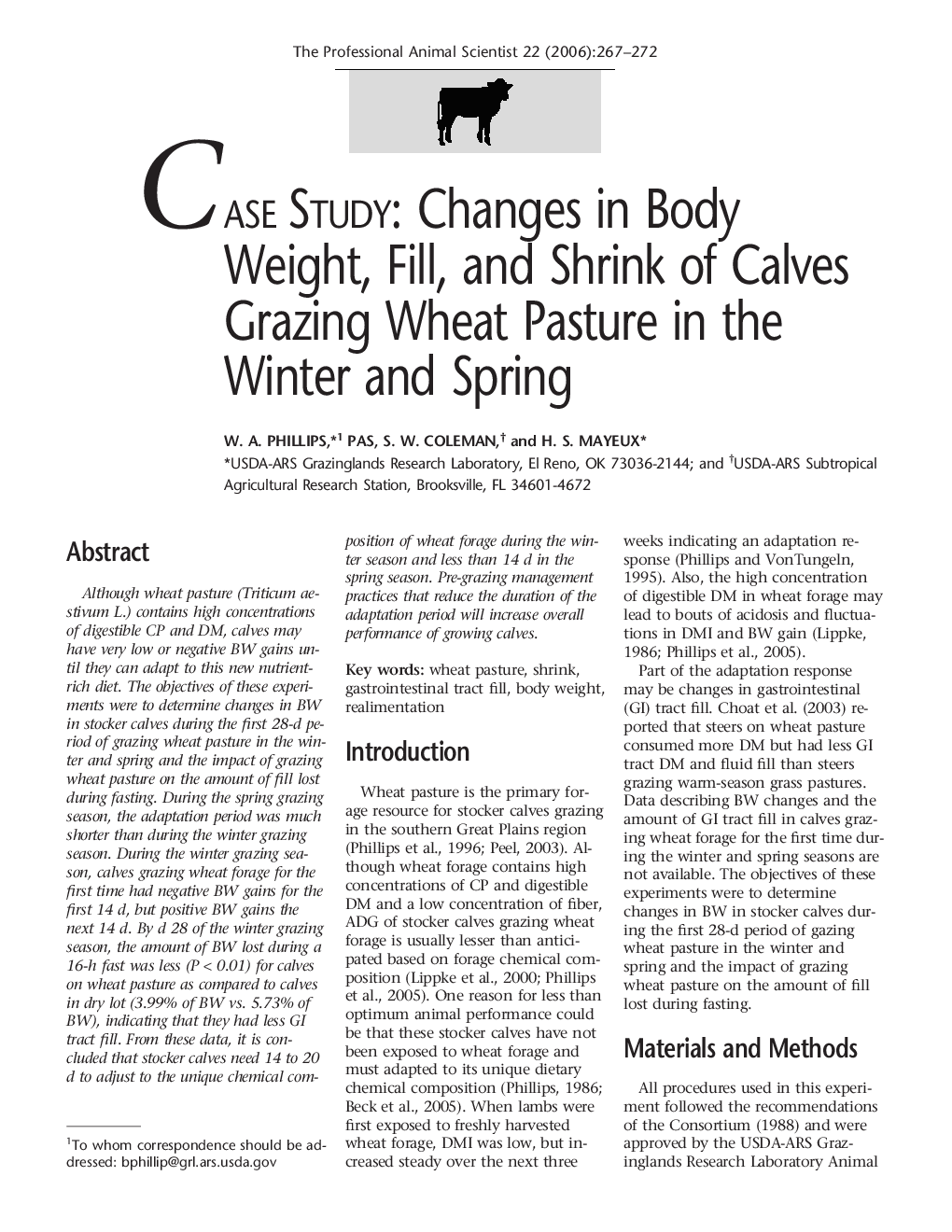| Article ID | Journal | Published Year | Pages | File Type |
|---|---|---|---|---|
| 2454590 | The Professional Animal Scientist | 2006 | 6 Pages |
Abstract
Although wheat pasture (Triticum aestivum L.) contains high concentrations of digestible CP and DM, calves may have very low or negative BW gains until they can adapt to this new nutrientrich diet. The objectives of these experiments were to determine changes in BW in stocker calves during the first 28-d period of grazing wheat pasture in the winter and spring and the impact of grazing wheat pasture on the amount of fill lost during fasting. During the spring grazing season, the adaptation period was much shorter than during the winter grazing season. During the winter grazing season, calves grazing wheat forage for the first time had negative BW gains for the first 14 d, but positive BW gains the next 14 d. By d 28 of the winter grazing season, the amount of BW lost during a 16-h fast was less (P < 0.01) for calves on wheat pasture as compared to calves in dry lot (3.99% of BW vs. 5.73% of BW), indicating that they had less GI tract fill. From these data, it is concluded that stocker calves need 14 to 20 d to adjust to the unique chemical composition of wheat forage during the winter season and less than 14 d in the spring season. Pre-grazing management practices that reduce the duration of the adaptation period will increase overall performance of growing calves.
Related Topics
Life Sciences
Agricultural and Biological Sciences
Animal Science and Zoology
Authors
W.A. (PAS), S.W. Coleman, H.S. Mayeux,
